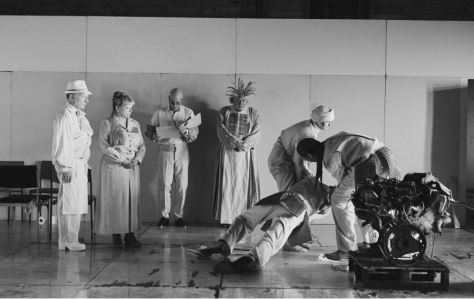I’ve probably miscounted somewhere, but it looks like I saw 38 plays and 44 operas in Europe this past season. As you might guess, I have some favorites. So without further ado, let’s begin with operas:
The Unexpected but Awesome Colors Award for surprisingly successful production aesthetics is split between David Bösch’s dark L’elisir d’amore and Peter Konwitschny’s (initially) cheerful cruise-ship Tristan und Isolde.
The Totally Regie Award goes to Antú Romero Nunes’ bold and striking William Tell, where everyone was a terrible person and the overture was not where I expected it. A close runner-up is the gritty Traviata I saw in Stockholm, where Kasper Holten managed to make strippers and homelessness part of this usually sparkly tragedy. (Note: many more productions were totally Regie; these are just the ones that were most successful at it.)
The Are They Even Human? Award for absurdly good singing is a three-way tie between Evelyn Herlitzius (Brünnhilde), Anja Kampe (Sieglinde), and Javier Camarena (Don Ramiro) in Die Walküre and La Cenerentola.
The Went Back for Seconds Award is reserved for the only opera I went to see twice: Hans Neuenfels’ Manon Lescaut starring Jonas Kaufmann and Kristine Opolais. It was even better the second time, even if I never quite grasped the logic behind the Oompa Loompas. Oh, and did I mention that I got to meet Jonas Kaufmann?
The I Guess Modern Opera is Actually Pretty Good Award has three winners: Andreas Kriegenburg’s staging of Zimmermann’s Die Soldaten, Dmitri Tcherniakov’s staging of Berg’s Lulu, and Peter Konwitschny’s staging of Rihm’s Die Eroberung von Mexico. None of these shows was particularly fun to watch (mostly because of the dark subject matter), but they were all breathtakingly well-directed and well-acted. Great conducting brought out the lyricism in atonal scores and prevented the music from just sounding like noise. Continue reading The Ilana Opera and Theater Awards

















